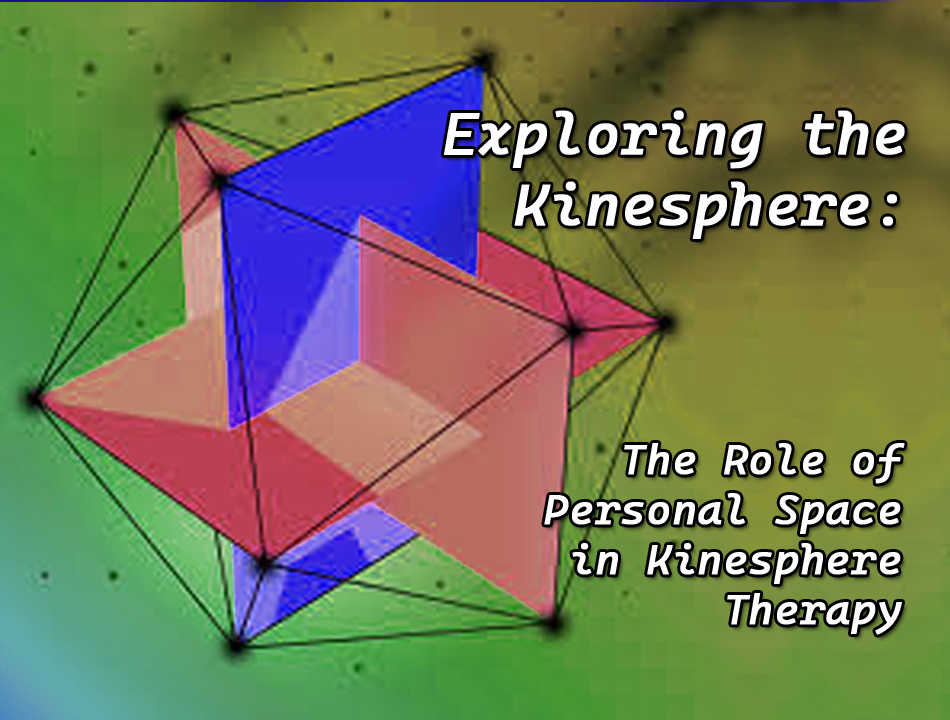The kinesphere is integral to movement therapy as it helps clients explore spatial awareness, personal boundaries, and emotional expression through motion. This article delves into kinesphere therapy, its applications, and its benefits for physical, emotional, and psychological health.
What is the Kinesphere?
The concept of the kinesphere originates from Rudolf Laban’s Movement Analysis, a system used to study and understand human movement. The kinesphere refers to the three-dimensional space surrounding an individual that they can access through movement without changing their base of support. It can be visualised as a personal “bubble” within which movement takes place.
Key Components of the Kinesphere:
Range of Movement:
The kinesphere can be categorised into:
- Small kinesphere: movements close to the body, symbolizing introspection or containment.
- Medium kinesphere: moderate movement, balancing internal and external awareness.
- Large kinesphere: expansive motion, indicating openness or assertion.
Spatial Pathways:
Movements can follow different trajectories:
- Central Pathways: Directed to or from the body’s core.
- Peripheral Pathways: Along the outer edges of the kinesphere.
- Transverse Pathways: Through the middle of the kinesphere, connecting points within the sphere.
Directional Awareness:
The kinesphere encourages exploration of dimensions such as height, depth, and width, allowing individuals to fully engage their spatial awareness.

Applications of Kinesphere Therapy:
The Role of Meaningful Movement in Therapy
Meaningful movement within the kinesphere is particularly emphasized in therapeutic practices like Dance/Movement Therapy (DMT), where it serves as a tool for self-discovery and healing.
- Movement Therapy (DMT): Encourages creative movement to explore emotions and personal identity.
- Physical Rehabilitation: Aids in rebuilding mobility and coordination after injury or surgery.
- Trauma therapy: It helps individuals reclaim their personal space and process traumatic experiences.
- Mindfulness Practices: Uses slow, deliberate movements to promote relaxation and present-moment awareness.
- Emotional Release: Exploring the kinesphere can help clients express emotions through movement, particularly for those who struggle with verbal communication.
Examples of Meaningful Movement in the Kinesphere:
- Reaching Outward:
- Symbolizes seeking connection, reaching for goals, or expanding one’s horizons.
- Drawing Inward:
- Represents self-reflection, gathering strength, or protecting one’s boundaries.
- Circular Motions:
- Conveys continuity, harmony, or cycles of life.
- Sharp, angular movements:
- Can signify tension, resistance, or urgency.
How to Cultivate Meaningful Movement:
- Mindful Practice:
Engage in slow, deliberate motions while paying attention to how the body feels within the kinesphere. - Creative Exploration:
Experiment with different pathways, sizes, and speeds of movement. Notice which evoke specific feelings or memories. - Guided Sessions:
Work with a therapist or movement coach who can help identify and interpret the significance of your movements. - Reflection:
After moving, reflect on how the movements felt. Did they align with your emotions or intentions?
Why Meaningful Movement Matters:
Exploring meaningful movement in the kinesphere fosters a deeper connection to oneself and one’s surroundings. It allows for personal growth, healing, and self-expression while honoring the intricate relationship between mind and body. Whether in a therapeutic setting or personal practice, meaningful movement provides a pathway to self-awareness and transformation.
Kinesphere and Pilates: Expanding Movement Potential:
The integration of the kinesphere concept into Pilates brings a fresh dimension to this popular movement practice. Pilates, which emphasizes core strength, alignment, and controlled motion, naturally aligns with the principles of kinesphere exploration. By consciously working within the personal space (kinesphere), practitioners can deepen their spatial awareness, refine their movements, and enhance the mind-body connection.
Benefits of Incorporating Kinesphere into Pilates Practice:
- Enhanced Spatial Awareness: Practitioners become more conscious of their movement in relation to their environment, improving balance and coordination.
- Deeper Muscle Engagement: Exploring the boundaries of the kinesphere promotes activation of stabilizing muscles, such as the core and pelvic floor, which are central to Pilates.
- Greater Movement Efficiency: By understanding spatial pathways and focusing on intentional motion, energy is conserved, and movements become smoother and more fluid.
- Holistic Alignment: Integrating kinesphere concepts helps ensure that movements are not just localized but part of a harmonious whole-body experience
Benefits of Kinesphere Therapy:
- Increased body awareness: Recognizing movement habits and limitations.
- Enhanced emotional expression: Using movement as a non-verbal form of communication.
- Improved spatial awareness: Understanding and adapting to one’s environment.
- Stress reduction: Movement exploration can release tension and promote relaxation.
- Development of confidence: Encouraging larger, freer movements can support a sense of empowerment.
The Science Behind Movement-Based Therapy:
Research shows that movement activates multiple areas of the brain, including those associated with memory, emotions, and problem-solving. Engaging in movement-based practices can help rewire neural pathways, promote emotional release, and improve overall well-being. Take the first step toward transformation. Rediscover your innate ability to heal, grow, and thrive through the power of movement.
Conclusion:
Kinesphere therapy offers a profound way to explore personal space, movement, and expression. By integrating physical and emotional healing, it provides a holistic approach to well-being. With further depth, evidence-based examples, and visual aids, this content can serve as a valuable resource for both practitioners and readers interested in the transformative power of movement therapy.




Leave a Reply